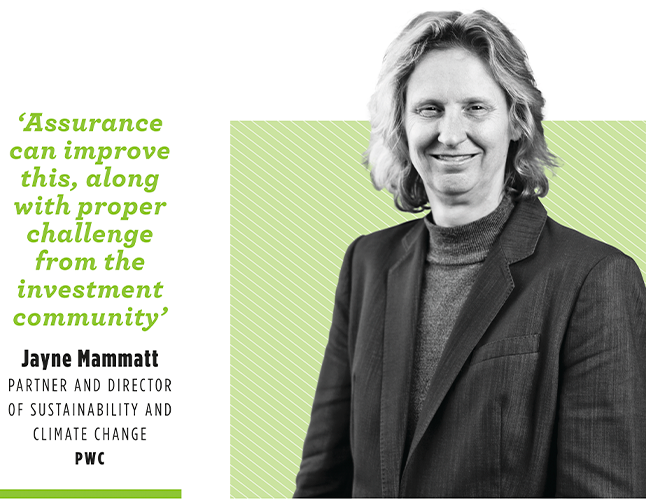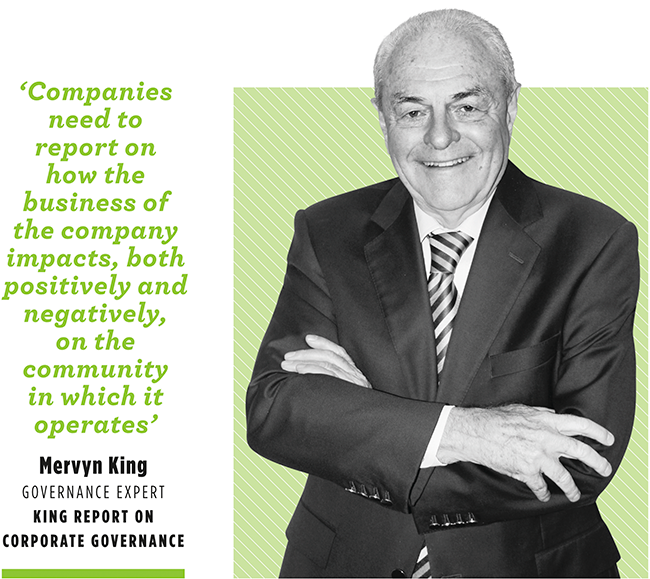Lately analysts have been referring to the sustainable investment arena as ‘an alphabet soup’ and they may have a point. Like ABC-shaped pasta, acronyms for bodies, standards and frameworks are floating around the main ingredient, ESG. These three letters are, of course, a well-established abbreviation, in which E stands for environmental, S for social and G for governance – with ESG-related matters often interchangeably called sustainability or non-financial issues. However, this jumble of acronyms could become more transparent and aligned in the near future.
In August 2020, five leading ESG framework and standard-setting institutions – namely the Global Reporting Initiative (GRI), Sustainability Accounting Standards Board (SASB), Climate Disclosure Standards Board (CDSB), CDP (formally the Carbon Disclosure Project) and International Integrated Reporting Council (IIRC) – issued a document in line with recommendations by the Task Force on Climate-Related Financial Disclosures, stating they were working together to try obtain harmonisation of the fragmented standards.
Shortly thereafter, in November, the SASB and IIRC announced their intention to merge. The Value Reporting Foundation will be formed by mid-2021 and aims to establish a ‘credible, international organisation that maintains the Integrated Reporting Framework, advocates integrated thinking, and sets sustainability disclosure standards for enterprise value creation’, according to a press release. Earlier, in September 2020, the WEF – together with the ‘big four’ accounting firms (Deloitte, EY, KPMG, PwC) – issued recommendations for common metrics on ESG reporting. The white paper, which was put out for consultation at the beginning of the year, identifies 22 core metrics included in current standards (with 18 adopted from the GRI).
According to Mervyn King, the globally acclaimed SA governance expert behind the King Report on Corporate Governance, ‘there is a clarion call now for the harmonisation of ESG standards, and both preparers and users – as well as regulators – are in general agreement that there should be one international sustainability standards board, certainly in the 144 countries adopting the International Financial Reporting Standards [IFRS] of financial reporting’. He said in November that the previous six months had seen much movement towards such harmonisation of the ‘plethora of ESG standards that has been causing clutter, overlapping and confusion in the market place’.

The correlation between sustainability-related factors and financial viability is becoming clearer, as ESG issues affect an ever-increasing range of audiences worldwide, particularly listed companies and the investment community. COVID-19, with its humanitarian and economic crisis, as well as recent natural disasters such as fires, drought and floods, have demonstrated how ESG topics that were previously considered immaterial by companies can quickly turn into material risks that threaten the long-term business operations and profitability in SA and globally. The growing appetite for ‘green’ and socially responsible investment products and impact investing has led to the demand for better ESG risk disclosure. Asset managers and investors need clear, up-to-date and comparable information on ESG performance to be able to make informed investment decisions.
‘Beyond the recognition that ESG matters can be material risks, we are seeing more evidence that the explicit consideration of ESG factors into investment decision-making can generate alpha,’ says Chief Sustainability Officer at the JSE Shameela Soobramoney. ‘Through this crisis, and some before it, the evidence is emerging that those companies who have made [an] effort to improve their performance on these issues, have translated [it] into better resilience. Their effort to treat employees well, maintain good customer relationships, practise good governance and the like, seems to be driving better performance and showing why we see that the “intangibles” have tangible value.’
The decision by the Financial Sector Conduct Authority to advise pension funds that the explicit consideration of ESG factors is part of their fiduciary responsibility is an important one. The relevant guidance note states that ‘integral to this approach […] is the integration of ESG risk factors into risk-management systems, and ensuring environmental and social risk is identified and mitigated in existing and future portfolios’. King explains why this matters when pension funds make investment decisions on behalf of the individuals contributing to their fund. ‘They need to make an informed assessment of the sustainability and the long-term success of that company. They need more information than simply the balance sheet, the profit-and-loss statement, and the related notes. Therefore, companies need to report on how the business of the company impacts, both positively and negatively, on the community in which it operates,’ he says. ‘As soon as you get all the social, environmental and economic results of an organisation in one integrated report, it starts showing the true performance of that organisation.’
However, non-financial reporting still lacks the maturity of financial reporting. Jayne Mammatt, PwC partner and director of sustainability and climate change, points out that – in addition to there being no definitive ESG guidance, framework and standards – in SA, sustainability reporting is still voluntary. ‘So everyone does it differently, which means there is limited consistency or comparability between years, companies and industries. Assurance is also voluntary, so companies can pay lip service to what and how they report, and the user has to assess what they can use and trust.’ A recent behavioural study by investment research and management firm Morningstar found that too much ESG information tends to overwhelm and distract investors. Essentially, there is no lack of ESG data as such, but of the ‘right data’.
Public companies often use indicators from a variety of standard-setting organisations, and their reports may not contain information that is material to the firm’s business context, and may not help investors understand a company’s ESG risks, according to the study. ‘The efforts to align reporting frameworks and standards is no doubt welcome, with a core consideration of driving the right behaviour,’ says Soobramoney. ‘The JSE has made the King Code of Corporate Governance part of the listing rules on an “apply and explain” basis, and King is clear about the need to explicitly consider ESG issues as part of good governance. The matter of integrated thinking is crucial. To avoid a “tick box” approach to reporting on ESG issues, and to foster a change in behaviour that aligns with the various aims of sustainable development, management and the board need to fully apply their minds to how these issues affect their business, and how their business impacts on these issues. Once this practice is ingrained in businesses and their various processes, then they will be able to report in a meaningful manner, which best suits the communication of their sustainability risks and opportunities to the relevant audience.’

The harmonisation of ESG reporting would allow institutional investors owning a portfolio of assets to better collate an ESG score across an entire portfolio of assets, says Malcolm Fair, MD of investment advisory and financial analytics firm RisCura. ‘This puts these institutions in a position to better execute on the responsibility they have been entrusted with by the underlying savers. They could better understand and compare investment products across markets. They would be in a position to compare their different investment managers on how they construct portfolios when observed through an ESG lens. They could demonstrate how their own ESG scores have improved across the fund over time and demonstrate how this has led to long-term value creation.’
He adds that, ‘from a practical point of view, a common set of ESG definitions and metrics allows for easier reporting at asset level, portfolio level (group of assets) and total fund level (many funds have multiple portfolios and/or managers they invest with). Theoretically, it could also drive down the cost of ESG reporting. This would in turn make it more accessible for a wider group of discerning investors’. Yet critics argue that a single common standard could be too prescriptive and lead to a compliance mindset rather than to creative ESG solutions that would drive the broader sustainability agenda. ‘Agreed, it can lead to this,’ says Mammatt. ‘For some organisations, reporting will drive behaviour. For others it is and will remain an annual reporting compliance event. Assurance can improve this, along with proper challenge from the investment community – if they are not happy then they need to ask questions, just like they do around financial performance and other issues.’
The world’s largest asset manager, BlackRock, is pushing hard for standardisation, but admitted that ‘a true single set of global rules or standards is unlikely to emerge in the near-term’. Meanwhile, the GRI, SASB, CDSB, CDP and IIRC note in their statement of intent that some flexibility is required. Considering their work as ‘a natural starting point for the development of a comprehensive, globally accepted, corporate reporting system’, the institutions say, ‘we recognise that a global corporate reporting system is made up of “building blocks” based on distinctive materiality concepts, and that different jurisdictions may move more or less quickly to mandate or recognise all of these building blocks’. Ultimately, as these ESG building blocks become better aligned across more jurisdictions and investment opportunities, they are likely to encourage investors to place their money with companies that make a positive impact on people, planet and profit – turning sustainability into the new global standard.








